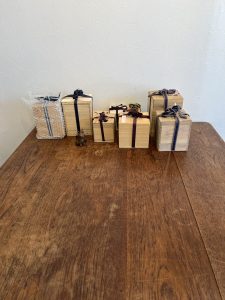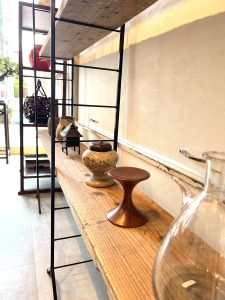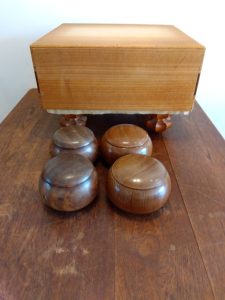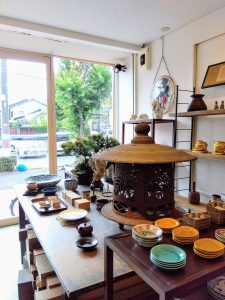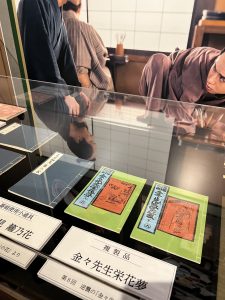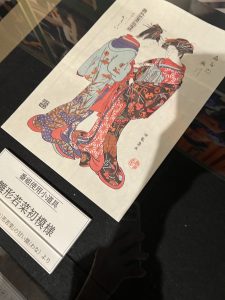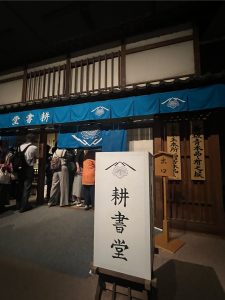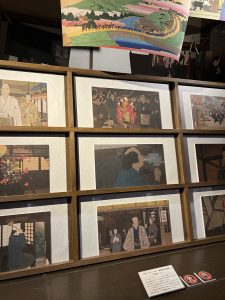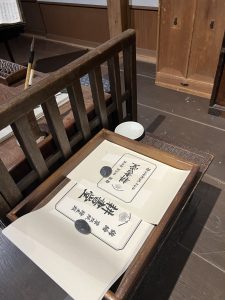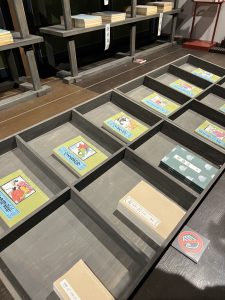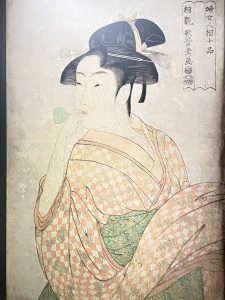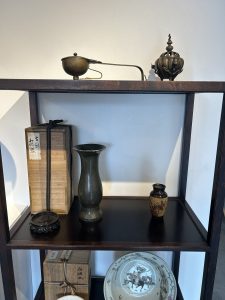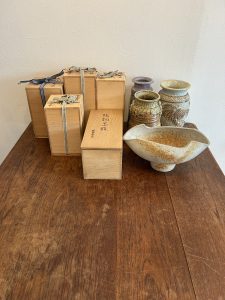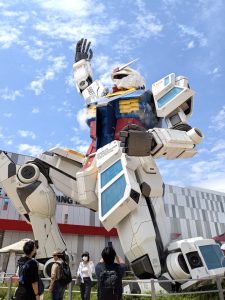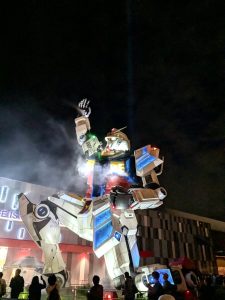中国で元気に過ごしてくれるといいですね(愛知県名古屋市千種区姫池通 骨董買取 古美術風光舎)
2025.06.29

昨日とうとう白浜アドベンチャーワールドのパンダ4頭、母親の良浜(らうひん)とその娘3頭が中国へ旅立ちました。我が家では末っ子の楓浜(ふうひん)の動画にはまっていた時期があり、楓浜とお気に入りの飼育員さんとのやりとりにいつも癒されていました。いつか返還されると分かっていながらも、なんとなく白浜に行けばいつでも会えると思い込んでおりました。何事も後回しにないことが大切ですね。
楓浜はとにかく色々なところから転がり落ちておりました。そんなに落ちまくって大丈夫なの?と心配してしいましたが、パンダは上るのは大得意ですが下りるのは苦手だそうで、落ちるように下りるのだそうです。そのコロンと落ちる姿がわざとじゃないかと思うほど愛らしく、動画に釘付けになりました。
楓浜のお気に入りの飼育員の一人に「なかさん」と呼ばれる方がいて、やんちゃな楓浜によく手こずっていらっしゃいました。馴染みのお客さんからは「なかさん頑張ってー!」の声が掛かることもあり、微笑ましい光景でした。甘えん坊で繊細な楓浜、お母さんの良浜と姉妹たちと一緒に中国でも元気に過ごしてくれるといいなと思います。
皆さまお気づきでしょうが、アドベンチャーワールドのパンダの名前には後ろに「浜」が付いており、「浜家」として親しまれていました。17頭もの子孫を残した雄の「永明」の子どもたちです。
白浜アドベンチャーワールドは非常に難しいとされるパンダの繁殖に成功した世界でも数少ない施設とされています。
1988年に日中友好協会と和歌山県の協力のもと中国政府の承認を得て、短期借受展示の契約を交わし「辰辰」と「慶慶」の2頭のジャイアントパンダがアドベンチャーワールドに来園し、3か月間のみ触れ合うことができたそうです。
その後、世界中でパンダの飼育下での繁殖が減り生育率も低い状態となる中、1994年にジャイアントパンダの輸入許可を取得し、2頭のパンダがアドベンチャーワールドに到着し、世界で初めて中国との「ジャイアントパンダ繁殖技術研究」がスタートしました。
その頃は関西に住んでおりましたが2頭のパンダの記憶は曖昧で、アドベンチャーワールドといえば、「シャチのショー」というイメージがまだありました。CMやポスターもシャチが主役だったように思います。いつからか来園すると「あっパンダもいるねー」という感じになり、混雑していることもなく、のんびり過ごすパンダをのんびりと眺めておりました。今思えばとても贅沢な時間でした。
今回研究プロジェクトの契約満了に伴いアドベンチャーワールドからはパンダがいなくなってしまいました。これまで献身的にお世話してきた飼育員さん方の気持ちを思うと察するに余りありません。パンダにしてもある日突然飛行機に乗せられ、大好きだった飼育員さんがいない場所に連れていかれるストレスは想像を絶するものかもしれません。
楓浜がまだ赤ちゃんだった頃に、日光浴のため外に出されると環境の違いに驚き、飼育員さんにしがみついて鳴き続けていた動画を思い出し切なくなりました。
1994年に日中の繁殖技術研究が開始した後は中国でも飼育下の個体数が劇的に増えたとのこと。繁殖数の多さからも、アドベンチャーワールドの繁殖技術の高さが証明されたということでしょう。
楓浜も何年後かに白浜に戻ってきて、今度はお母さんパンダとして飼育員の方々と再会できたら最高ですね。
やんちゃな姿しか見ていないので、母親になる姿が全く想像できませんが、もし帰って来てくれたら今度こそ会いに行こうと思います。
それでは、また次の機会に。(スタッフH)
Yesterday, four pandas from Shirahama Adventure World, a mother and her three daughters, finally left for China. There was a time when our family was addicted to the video of the youngest, Fuhin, and we were always healed by the interaction between Fuhin and our favorite keeper. Although I knew that one day they would be returned, I somehow assumed that I could see them whenever I went to Shirahama. It is important not to put everything off.
Maple beach was rolling down from various places anyway. I was worried about whether it was safe to fall so many times. I was worried, but I heard that pandas are good at climbing up but not so good at falling down, so they fall down like falling down. The way they fall was so adorable that I thought it was on purpose, and I was glued to the video.
One of Kaedehama’s favorite keepers is called “Naka-san,” and he often had a hard time with the mischievous Kaedehama. Some of the familiar customers would call out to him, “Good luck, Naka-san! It was a funny scene. I hope Kaedehama, who is a pampered and sensitive girl, will be fine in China with her mother Ryohama and sisters.
As you may have noticed, the pandas at Adventure World have “Hama” at the back of their names, and were affectionately known as “Hama family.” They are the offspring of a male, “Yongming,” who had 17 offspring.
Shirahama Adventure World is considered one of the few facilities in the world that have succeeded in breeding pandas, which is considered extremely difficult.
In 1988, with the cooperation of the Japan-China Friendship Association and Wakayama Prefecture, and with the approval of the Chinese government, two giant pandas, “Cinncin” and “Qingqing,” came to Adventure World under a short-term loan exhibition contract, and were allowed to touch each other for three months only.
Later, while the number of pandas breeding in captivity was decreasing and the growth rate was low around the world, in 1994, we obtained an import license for giant pandas, two pandas arrived at Adventure World, and the “Giant Panda Breeding Technology Research” with China started for the first time in the world.
I was living in Kansai at that time, but my memory of the two pandas was still vague. Whenever I came to the park, I would say, “Oh, there are pandas here, too,” and I would leisurely watch the pandas taking it easy without being crowded. Thinking back on it now, it was a very luxurious time.
With the expiration of the contract for the research project, there will be no more pandas from Adventure World. I cannot help but feel sorry for the pandas and their keepers who have been taking care of them so devotedly. Even for the pandas, the stress of suddenly being put on a plane one day and taken to a place where their beloved keepers are no longer there may be unimaginable.
I was saddened to recall a video of Kaedehama, when she was still a baby, clinging to her keeper and whimpering in surprise at the difference in environment when she was taken outside for sunbathing.
After Japan-China research on breeding techniques began in 1994, the captive population in China increased dramatically. The large number of breeding numbers probably proves that Adventure World’s breeding techniques are very good.
It would be great if Kaedehama could return to Shirahama in a few years and be reunited with her keepers, this time as a mother panda.
I have only seen her as a naughty girl.
I have seen her only as a naughty girl, so I cannot imagine her as a mother at all, but if she comes back, I will visit her this time.
So, I will see you next time. (Staff H)
*******************
ご実家の整理やお片付けなどをされている方のご相談などが多くございます。
お片付けなどくれぐれもご無理のないようになさってくださいませ。
風光舎では古美術品や骨董品の他にも絵画や宝石、趣味のお品など様々なジャンルのものを買受しております。
お片付けをされていて、こういうものでもいいのかしらと迷われているものでも、どうぞお気軽にご相談下さいませ。
また風光舎は、出張買取も強化しております。ご近所はもちろん、愛知県内、岐阜県、三重県その他の県へも出張いたします。
まずは、お電話お待ちしております。
愛知県名古屋市千種区姫池通
骨董 買取【古美術 風光舎 名古屋店】
TEL052(734)8444
10:00-18:00 OPEN

